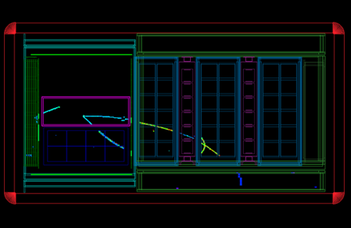Neutrino research has entered a new phase
Neutrinos are the most common particles in our universe, they have no electric charge and their mass is not yet known. However, there is already evidence that they have a non-zero mass and that they change from one flavor to another, a phenomenon known as neutrino oscillation. Intense neutrino beams produced by particle accelerators are now being used to study the physics of neutrino oscillations more precisely.
The T2K international collaboration has involved nearly 600 researchers from 78 research institutions in 14 countries. The experiments sends the intense beam of neutrinos produced at the Japan Proton Accelerator Research Centre (J-PARC) in Tokai on the east coast of Japan to nearby detectors located 280 m from the beam origin and to the Super-Kamiokande Neutrino Observatory in Gifu, about 300 km away, where their intensity and composition will be measured and their properties deduced from the data. T2K is the first experiment to successfully detect electron neutrinos the appearance of a muon-neutrino in the beam, and first found “indication” of matter-antimatter asymmetry in neutrinos.
"Neutrinos are made from decayed pions or other particles produced by interactions between proton beams and a graphite target. To understand their properties and why antimatter is missing from the universe, a lot of neutrinos need to be produced and the interactions between neutrinos and nuclei need to be understood in more depth," says Yoshikazu Nagai, an assistant professor at the Department of Atomic Physics at ELTE, who leads the beam group in the T2K collaboration.
At the end of 2023, the T2K collaboration launched a new phase of the experiment, for which a number of instruments were upgraded or replaced. J-PARC has upgraded the main ring accelerator to increase the proton beam power. T2K has upgraded its neutrino production instrumentation to achieve the stable production of neutrino beam at a record high proton beam power (about 710 kW), an increase of about 40% compared to the pre-upgrade state. On 25 December, the neutrino beam was already operating at 760 kW, which is even higher than planned.
The pulsed electromagnet (electromagnetic horn) system, the heart of the neutrino generator, was also upgraded. "The current applied to the three electromagnetic horns has been increased from 250kA to 320kA by upgrading the power supply and other components, thus increasing the focusing efficiency of the initial particles, such as the pions generated on the target. This has improved the quality of the neutrino beam delivered to the Super-Kamiokande detector, while the number of neutrinos observed has increased by an additional 10%," says Pingal Dasgupta, a postdoctoral researcher at the Department of Nuclear Physics at ELTE, who contributed to the experimental operation as a beam expert.

The electromagnetic horn was also upgraded
By October 2023, T2K also have deployed three new types of neutrino detectors near the neutrino-producing target, which will be able to measure neutrino interactions with even greater accuracy than before. The newly deployed detectors are SuperFGD, which detects tracks around the neutrino interaction point within the detector, High-Angle TPC, which measures the momentum of emitted particles over a wide angular range, and Time-of-Flight, which can detect incoming or outgoing particles and identify the particles. The collaboration also improved the neutron sensitivity of the Super-Kamiokande detector by adding gadolinium to the water.

The new detector
T2K started measurements with the improved neutrino beam in December 2023, and has already observed neutrino event candidates from the newly acquired data. As a result of the upgrade, it is expected that about three times as many neutrino interactions will be observed as before, which will reduce the error originating from statistical variations (statistical error). The new detector's ability to detect the scattering of neutrino interactions over large angles will enable a better understanding of neutrino-nucleus interactions.
With these improvements, the T2K collaboration will be able to make significantly more accurate measurements, and will continue to study the behavior of neutrinos and antineutrinos in the hope of significant results. The J-PARC high-performance proton accelerator and neutrino experiment is expected to play a key role in the next phase of neutrino research, and the new data will help unravel the mystery of the missing antimatter in our universe. Using the latest developments of T2K, the ELTE Neutrino Physics Research Group led by Yoshikazu Nagai is, among other things, searching for evidence of CP violation in the lepton sector.

